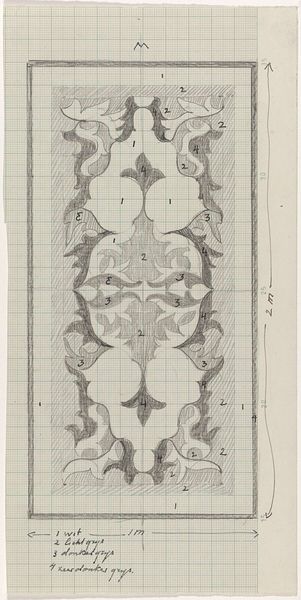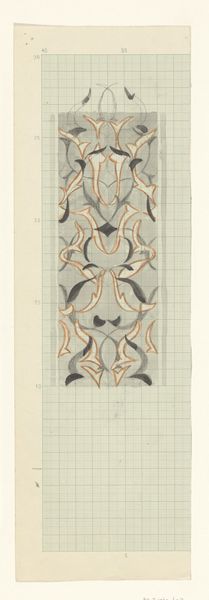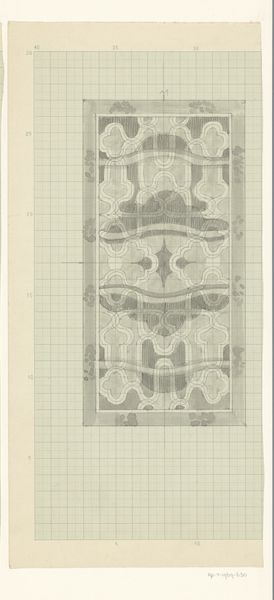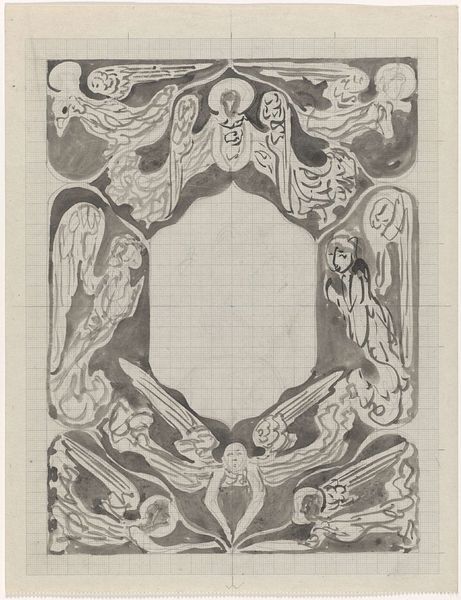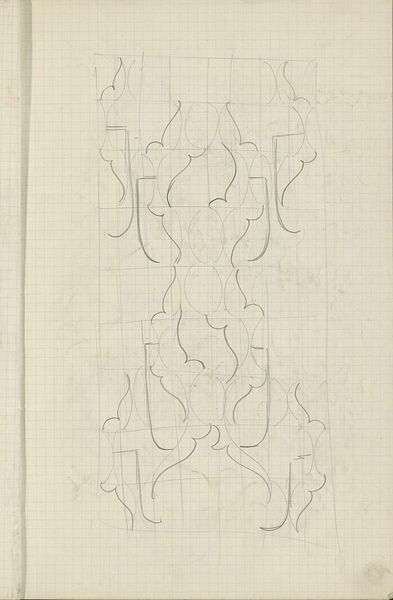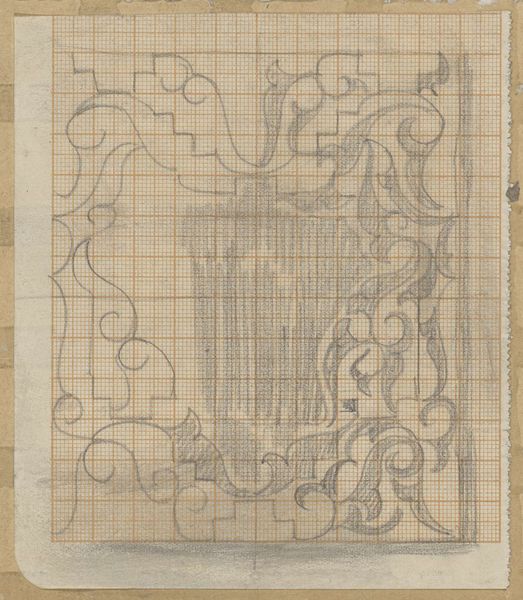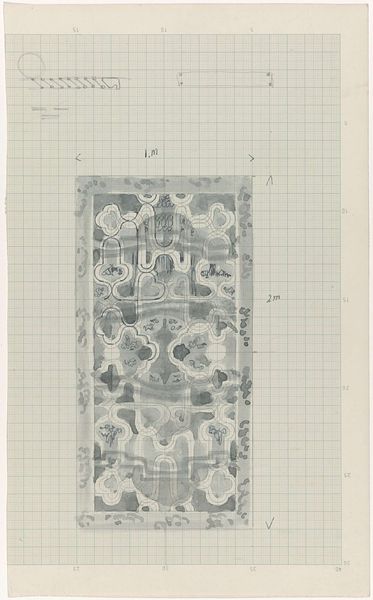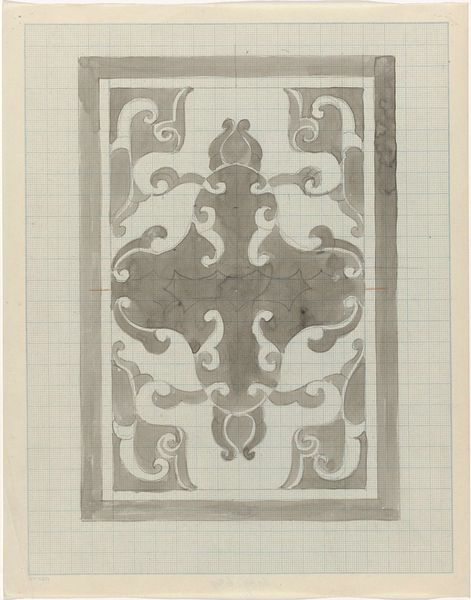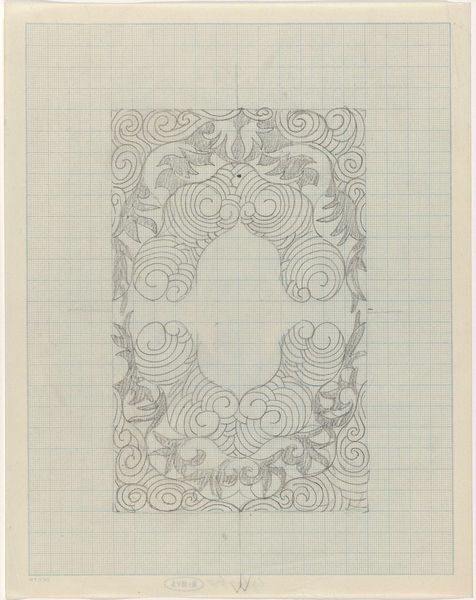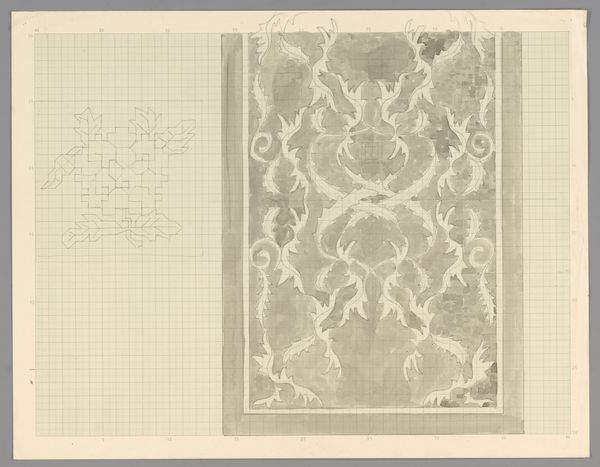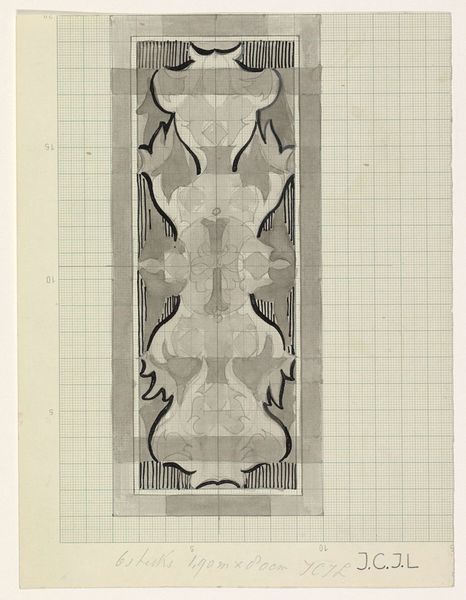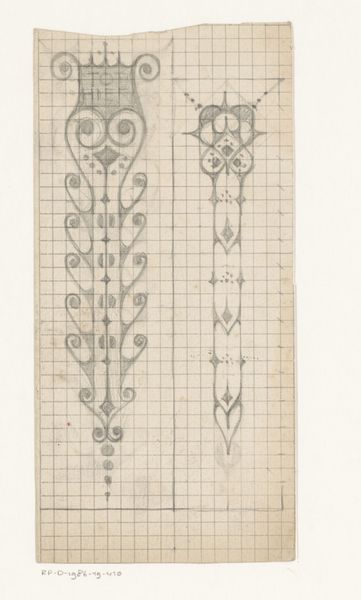
drawing, pen
#
drawing
#
naturalistic pattern
#
organic
#
art-nouveau
#
pattern design
#
repetitive shape and pattern
#
organic pattern
#
geometric
#
fabric design
#
pattern repetition
#
pen
#
textile design
#
decorative-art
#
layered pattern
#
combined pattern
#
pattern work
Dimensions: height 335 mm, width 180 mm
Copyright: Rijks Museum: Open Domain
Curator: Let's turn our attention to this fascinating drawing by Carel Adolph Lion Cachet: a "Decoratief ontwerp met gestileerde leeuwen," or "Decorative Design with Stylized Lions," dating from between 1874 and 1945. Editor: It’s interesting. At first glance, I see these symmetrical forms that almost suggest an ornate mirror or portal. There’s something simultaneously calming and heraldic about it. Curator: Indeed, its strength lies in the interplay of symmetry and the subtle shifts in tone and line. Observe how the stylized lions— barely discernible at first —are woven into an organic pattern. The artist meticulously utilizes the grid structure beneath to establish rigorous order. Editor: The lions themselves... Are we intended to see past their association with power? The way they melt into these botanical forms feels like a challenge to traditional hierarchies, maybe reflecting the decline of aristocracy and the rise of new aesthetic sensibilities at the time. There’s a fluidity that speaks to Art Nouveau's influence, doesn't it? Curator: Precisely. We see here how nature motifs merge with an almost geometric abstraction. Note how Cachet utilizes line to create texture and depth, allowing negative space to participate actively in the design. It’s an intriguing example of how organic form can become subservient to geometric and structural constraints. Editor: Perhaps the intended application, as a textile or wallpaper design, invited this softening of symbols—a domestication, even. And considering this was a period marked by massive colonial expansion and deeply entrenched social inequalities, does this taming of a 'lion' figure subtly engage with those dynamics? Is this decor complicit, innocent, or something in between? Curator: What resonates for me is the purity of the aesthetic pursuit itself. Cachet, with his chosen palette and design, sought a visual harmony achieved through controlled repetition and the considered balance of form. The conceptual baggage, while intriguing, remains secondary to this visual and formal mastery. Editor: Even through the mastery, it's powerful to unpack the socio-historical context woven into this ostensibly benign decorative work. The tension between form and symbolic context makes the piece more resonant for me. Curator: Well said. It's clear that, beyond surface appearances, such works can indeed accommodate diverse viewpoints and provoke meaningful inquiries.
Comments
No comments
Be the first to comment and join the conversation on the ultimate creative platform.
